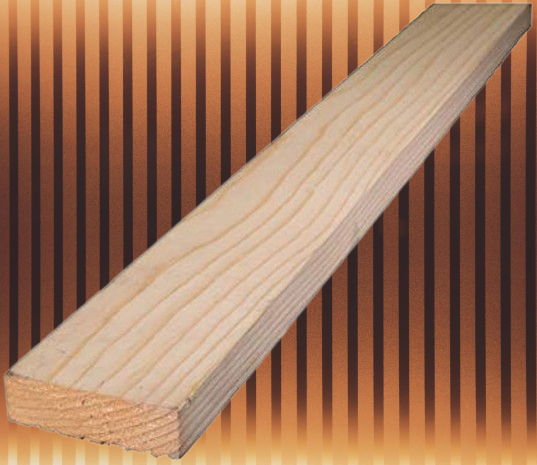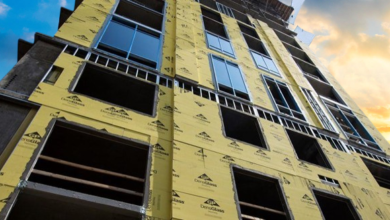Furring Strips & Foam Board Installation Guide

Without a doubt, one of the greatest insulating materials for building a home or business is foam board.
Nevertheless, despite all of its advantages, foam board is not structurally strong enough to hold up siding or drywall. Furring strips come in handy in this situation.
Furring strips, when installed over foam board, provide a sturdy surface to which you can fasten extra building materials without having to worry about your walls’ structural integrity being compromised.
If you would like to construct such a setup, I will walk you through the process of installing furring strips over foam board in this article.
Can Furring Strips Be Installed Over Foam Board?
Furring strips can, of course, be installed over foam board. The majority of people typically assume that you can’t attach anything to foam board because of its physical characteristics.
While somewhat accurate, furring strips made of metal or wood can be quickly bonded to foam board. And the usual reason for doing this is to give foam board a stable surface on which builders can adhere other materials.
How Are Furring Strips Installed Over Foam Board?
- Step 1: Compile Necessary Materials
To do such a job, you don’t need a lot of tools. A measuring tape, a leveler, a set of long screws or nails, furring strips (which can be made of metal or wood), and foam board insulation are all necessary.
- Step 2: Cover the foam board with construction adhesive
Next, cover the foam board’s two sides with a thick layer of construction adhesive. Make sure the foam board is firmly adhered to the wall by attaching it to it.
- Step 3: Determine the Furring Strip spacing on the foam board.
You must determine the perfect space before laying the furring strips over the foam board. The size of the foam board you’re working on will determine that. The furring strips should ideally be spaced 16 to 24 inches apart.
- Step 4: Installing the furring strips on the foam board.
We’re going to affix the furring strips to the foam board using two different methods. the construction adhesive you previously used.
and a lengthy set of nails or screws. These two will guarantee that the furring strips and the foam board have a solid bond.
Starting with the furring strips, gently press them onto the foam board. It will stick with the construction adhesive. Next, use long screws to fasten the furring strips to the wall studs.
I’m not a big fan of nails, but some people use them. Because the force used to strike the nail with a hammer may harm the foam board or furring strips.
Furring strips are attached to the foam board with screws, which are a much safer and more reliable option.
That’s all there is to it. You’ll know that you’ve covered your foam board with furring strips successfully. You can now hang siding, drywall, or any other material you wanted to affix to the foam board.
Why Should Furring Strips Be Installed Above Foam Boards?
You may be surprised to learn that installing furring strips over foam boards serves purposes other than just providing a sturdy mounting surface.
However, there are a number of additional advantages that contractors and property owners can enjoy by covering foam boards with furring strips, such as:
- If there are any imperfections in the wall, furring strips placed over foam board can help even out the surface.
- It can also free up additional space for plumbing fixtures like pipes and electrical equipment like wires.
- By placing these strips on top of foam board, you can also create an air gap that will enhance your home’s insulation. This holds true for insulation against noise and heat.
- Furring strips should be installed over foam board in order to provide a moisture drainage plane. This is a long-term fix for mold and other moisture-related problems.
Furring strips should therefore be installed over foam board for more reasons than just providing a sturdy mounting surface. This setup offers additional benefits.
Are Furring Strips Included With Any Foam Boards?
We have to give the manufacturing industry credit for their inventiveness and creativity. The problem is that some foam boards have furring strips pre-installed.
As a result, these provide a two-in-one solution for mounting a surface and installing foam boards. An outstanding illustration of one of these products is Amvic Building System’s Envirostrap.
Furring strips can be purchased already installed, so you can hang it on your walls without having to attach them to the foam board first.
These foam boards with furring strips make your job easier, but there are a few drawbacks.
To begin with, you won’t be able to arrange the furring strips in a way that best suits your project. You are forced to depend on the manufacturer’s recommended spacing.
In terms of cost, foam boards with furring strips already installed are more expensive than standard foam boards that require you to fasten the furring strips yourself. Therefore, if you’re working on a big project, you might spend more money.
Prior to purchasing foam boards with furring strips already installed, consider the advantages of each choice and determine which is best for you.
If you enjoy doing projects on your own, I suggest getting some foam board and installing the furring strips yourself.
Which Screw Length Is Best For Furring Strip Installation Over Foam Board?
You’ll notice that I left out the ideal screw length when I described how to fasten furring strips over the foam board. The reason I omitted that detail was that there isn’t a recommended size for all projects.
There are different thicknesses for furring strips and foam boards. As such, if I specify a screw length, it might not be enough to securely fasten every setup.
You are required to determine the optimal screw length on your own. And measuring the foam board and furring strips’ thicknesses can help with that.
Considering that the foam board is 1.5 inches thick and your furring strips are 0.50 inches in length. This results in two inches overall.
In this case, screws that are at least three inches long are what you should use. The additional inch makes up for materials that will be on the other end, such as wall studs.
It’s common for people to forget about the screw length when furring strips are installed over foam board. However, obtaining the right size is essential to guaranteeing that these two materials will adhere strongly.
While we’re talking about screws, be sure to choose ones made specifically for substrates like foam board. It would be fantastic if you could also obtain screws that resist rust!
What’s the Durability of Furring Strips Over Foam Board?
Furring strips over foam board can endure for years or even decades if the proper conditions are met. Both materials are prone to deterioration over time, so they won’t last forever.
Longevity is not an issue, though, if the furring strips were securely fastened over the foam board.
Please be aware that the furring strips’ lifespan may be impacted by the quality of the materials used. Pre-treated wood is always preferable because it is more resilient.
Additionally, you will have greatly increased the furring strips’ lifespan if you can keep moisture and pests away from them.

